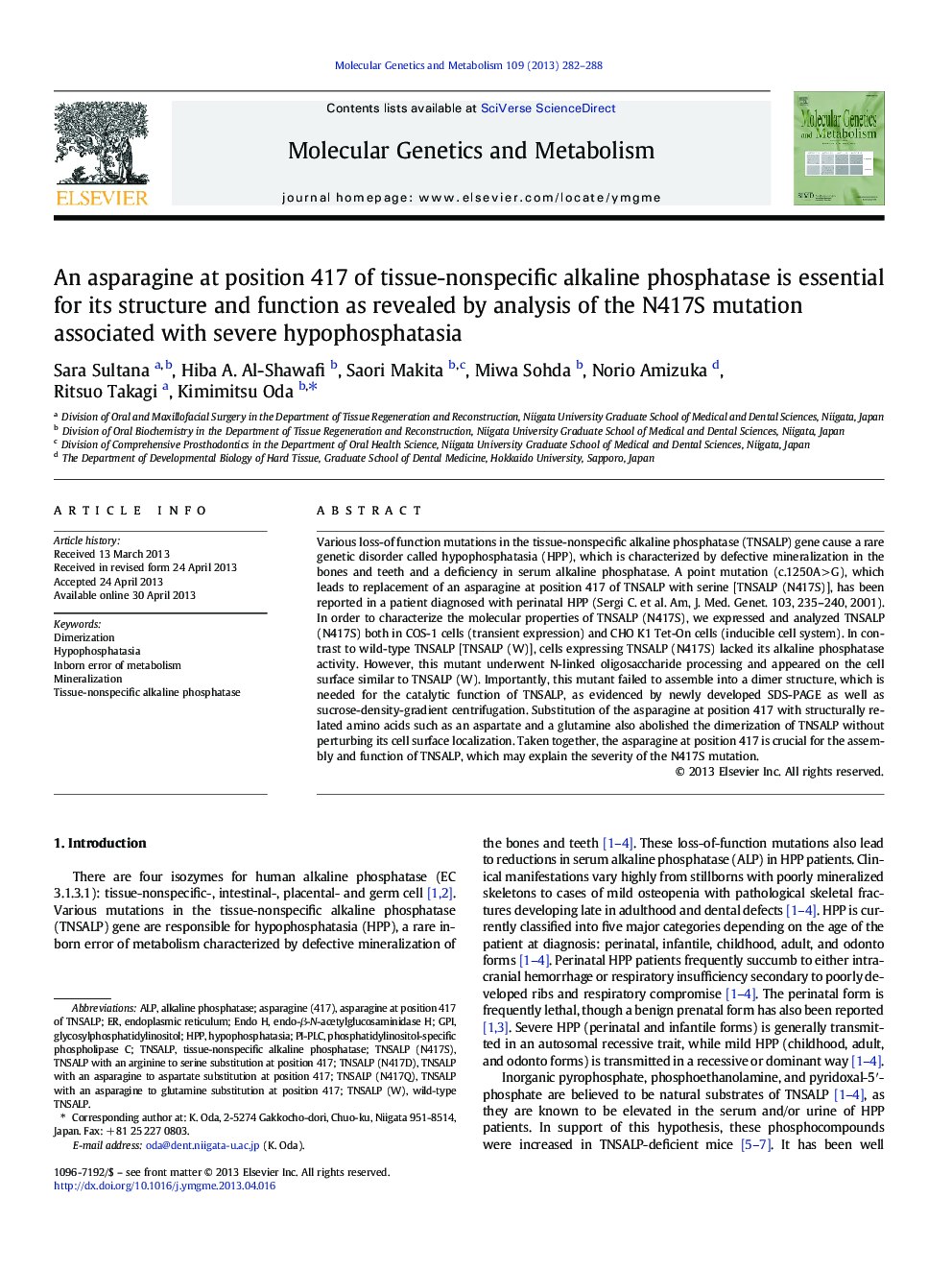| Article ID | Journal | Published Year | Pages | File Type |
|---|---|---|---|---|
| 10832617 | Molecular Genetics and Metabolism | 2013 | 7 Pages |
Abstract
Various loss-of function mutations in the tissue-nonspecific alkaline phosphatase (TNSALP) gene cause a rare genetic disorder called hypophosphatasia (HPP), which is characterized by defective mineralization in the bones and teeth and a deficiency in serum alkaline phosphatase. A point mutation (c.1250AÂ >Â G), which leads to replacement of an asparagine at position 417 of TNSALP with serine [TNSALP (N417S)], has been reported in a patient diagnosed with perinatal HPP (Sergi C. et al. Am, J. Med. Genet. 103, 235-240, 2001). In order to characterize the molecular properties of TNSALP (N417S), we expressed and analyzed TNSALP (N417S) both in COS-1 cells (transient expression) and CHO K1 Tet-On cells (inducible cell system). In contrast to wild-type TNSALP [TNSALP (W)], cells expressing TNSALP (N417S) lacked its alkaline phosphatase activity. However, this mutant underwent N-linked oligosaccharide processing and appeared on the cell surface similar to TNSALP (W). Importantly, this mutant failed to assemble into a dimer structure, which is needed for the catalytic function of TNSALP, as evidenced by newly developed SDS-PAGE as well as sucrose-density-gradient centrifugation. Substitution of the asparagine at position 417 with structurally related amino acids such as an aspartate and a glutamine also abolished the dimerization of TNSALP without perturbing its cell surface localization. Taken together, the asparagine at position 417 is crucial for the assembly and function of TNSALP, which may explain the severity of the N417S mutation.
Keywords
Related Topics
Life Sciences
Biochemistry, Genetics and Molecular Biology
Biochemistry
Authors
Sara Sultana, Hiba A. Al-Shawafi, Saori Makita, Miwa Sohda, Norio Amizuka, Ritsuo Takagi, Kimimitsu Oda,
